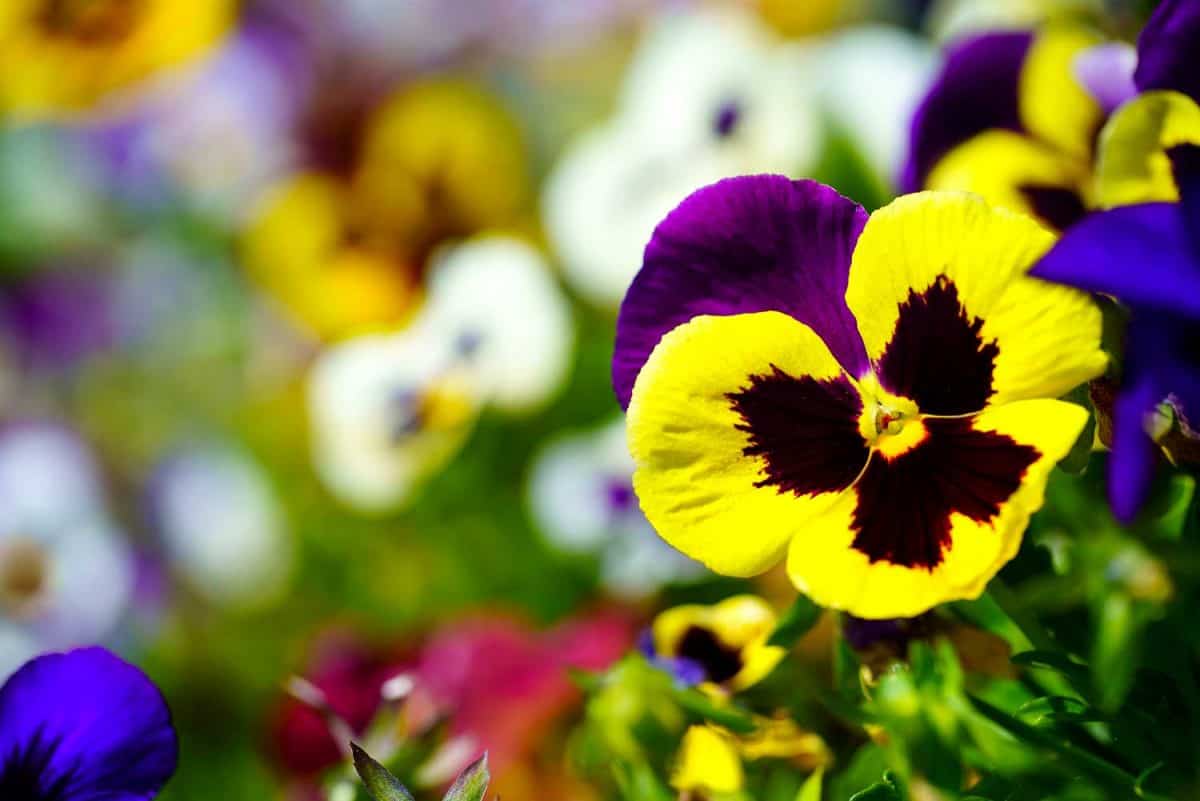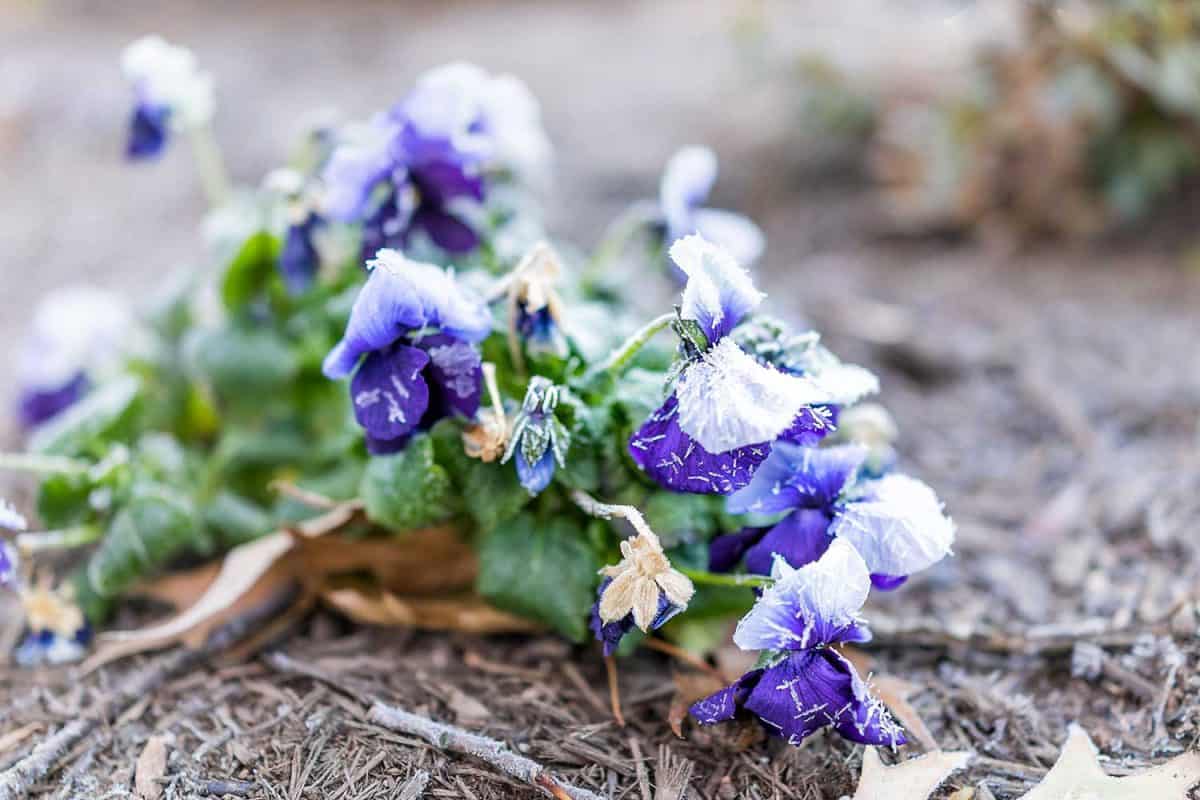Pansies are infamous flowers for the cold weather. But just because they're known to survive the cold, will it also mean that they can survive in the freezing weather? Whether they will make it or not, we did the legwork for you to answer this bugging question.
Pansies do not die in freezing weather. Instead, they wilt and turn grayish as a defense mechanism when the weather gets unbearably cold for them. The survival of pansies during freezing weather depends on how low the temperature could get. They can certainly live even when the temperature dips well below 25 degrees Fahrenheit or -3 degrees Celsius. But their chance of survival decreases when the temperature dips even lower.
While pansies can survive in freezing weather, it does not mean they are not susceptible to the adverse effect of the cold. In this article, we will explain how cold-tolerant pansies are and how you can make them thrive even in the cold autumn and winter air. Continue reading to learn more.
NOTE: WE MAY GET A COMMISSION IF YOU DECIDE TO MAKE A PURCHASE THROUGH THESE LINKS. THERE'S ADDITIONAL NO COST TO YOU. CHECK THE BOTTOM OF THE PAGE FOR MORE INFORMATION.

At What Temperature Do Pansies Freeze?

Pansies are known to be an enduring species of flower that can tolerate temperatures in sub-freezing conditions. However, when the air temperature dips to 26 degrees Fahrenheit or -4 degrees Celsius, pansies will start to show signs of wilting, turning gray in the process. At temperatures lower than that, the pansies will start to freeze.
However, this does not mean that the pansies have died. They only enter a state of inanimation due to the cold weather, something like hibernation in animals during the winter. Nevertheless, this flower will not stop putting out new buds even if frozen. They wait until spring to return even more graciously beautiful.
What other factor causes pansies to freeze?
In addition to low air temperature, the soil’s temperature can also cause the survival rate of pansies to go down during freezing weather.
Very cold or frozen soil causes the pansies to have a hard time extracting water and nutrients from the ground for their survival. The result? Dehydration and the inability to carry out photosynthesis, the process by which plants create food for themselves.
During the autumn or winter, check the soil temperature first before planting pansies. Hold off on planting pansies if you find that the soil has frozen or its temperature has been consistently lower than 26 degrees Fahrenheit.
Should You Cover Pansies When The Temperature Drops?

Pansies are hardy plants. But no matter how high its cold tolerance is, you still need to care for it, especially so when frigid air sets in and the temperature plunge to the extreme.
If you are located in a place where the temperature could dip to negative 10 degrees Fahrenheit, covering the pansies with lightweight pine straw mulch will keep your pansies thriving in the cold. Pine straw mulch keeps the heat of the soil to ensure the flowers are safe from possible freezing injuries.
Don’t confuse the pine straw mulch with heavy bark mulches. Pine straw mulches are lightweight, which makes them better in providing water passage to the flower, compared to heavy bark mulches that put too much weight on the pansies. On the other hand, if you are in an area with more forgiving cold weather, covering the pansies with frost-protection fabric can do the trick.
As we know, the weather during autumn and winter changes unpredictably. And when that happens, temperatures can plunge extremely low, which can cause the soil to freeze. This is when you should cover the pansies with solid mulch.
Also, be cautious when it rains during the winter as it further lowers the temperature of the soil. Saturated and very cold soil can hurt the roots, which are the lifeline of the pansies. Make sure the pansies are planted on elevated beds to avoid soaking the roots in cold winter rains.
what temperatures do pansies like
Pansies flourish and thrive in soils that have temperatures between 45 degrees Fahrenheit and 65 degrees Fahrenheit or 7 degrees Celsius and 18 degrees Celsius.
Plant pansies only when the soil temperature is around the numbers mentioned above because this is the tolerable temperature for the roots. Any lower than that lowers the survival rate of newly planted pansies.
This is the reason why pansies thrive well in parts of states like, but not limited to, California, Connecticut, Idaho, Alabama, Maryland, North Carolina, and Missouri during certain months because of their suitable temperature.
What Month Should You Plant Pansies?
The best months to plant pansies are during the early spring or autumn months. During these months, the temperature is just right for immature pansies and their roots to handle.
But to ensure that your efforts of planting pansies do not go in vain, use a soil thermometer so you can make a smart decision as to when it’s ready to plant. And since the seasons do not occur at the same time in different places, referring to the USDA plant hardiness zone will increase your chance of making the pansies survive.
For those who don’t know, the USDA hardiness zone map is a guide used by gardeners or produce growers to determine which plants thrive well in certain areas in the United States.
Pansies thrive well in zones 6 and above in different planting windows. Ideally, you can start planting pansies in late September if you’re in zones 6b and 7a, early October if you’re in zone 7b, and late October for zones 8a and 8b.
It’s also noteworthy that pansies love the morning sunshine and hate the hot afternoon sunlight that’s detrimental to their flower production.
How Long Will Pansies Last In The Garden?
If you follow the correct gardening procedures, pansies can thrive and bloom beautifully for up to 8 months, which is from September to May. But do not always expect them to bloom, especially if you are well way into the winter.
Some people regard pansies as perennial plants that can grow all year round. They’re not wrong to think this way. However, it depends on a person’s or garden’s geographical location as well as the variety of the flower.
For example, gardeners in zones 2 to 10 that experience moderate climates can continue growing pansies all year. Two pansy varieties known to grow perennially are pansy violets and bedding pansies.
However, the possibility of the pansies blooming in the summer heat is less likely. Remember that pansies are generally cold weather-loving flowers, so you still should deliberately choose to plant them during the cool seasons to see their budding beauty.
How to plant and make pansies grow well?
Now that we’ve answered the questions above, it’s time to know how you can grow pansies well. Read the easy steps below.
1. Determine the best month to plant and check the soil temperature. And the earlier you plant in the pansy planting season, the higher the chance that the temperature is just right. If you follow this step to the word, a quarter of the job is done.
2. Pick the pansy variety you want to plant. Choose one that has strong roots because they grow more quickly and can establish the plant well on the ground, which will play the greatest role in its survival during the winter.
3. Prepare the soil well. Make sure the bed is elevated if you’re planting the pansies on the ground. Adding organic compost constituted of animal manors or pit moss will help in adding moisture to the soil necessary for a healthy, thriving pansy root.
4. Make sure the area where you plant your pansies has good drainage to avoid saturating the roots of the pansies with water that can cause them to rot.
5. Plant pansy seeds in a seed tray rather than in the bed directly. This ensures that the environment is controlled, providing a higher rate of survival for the seedlings.
6. When the seedlings grew to an appropriate height, water the bed you prepared beforehand. Now, you can transfer each pansy to the bed. Plant each pansy seedling 6 to 12-inch away from each other for good air circulation.
7. Water the pansies regularly, once in the morning every week. Don’t forget to apply a good fertilizer every month, so they grow bigger and healthier.
8. When the freezing weather hits, cover your pansies with straw mulch or frost protection fabric to protect them from the winter frost.
Final Thoughts
Pansies can be both considered annual or perennial, depending on your location and the variety of the plant. Follow the steps on this blog, so you can feel the heartwarming feeling pansies can give you whichever season you want to cultivate them in!



